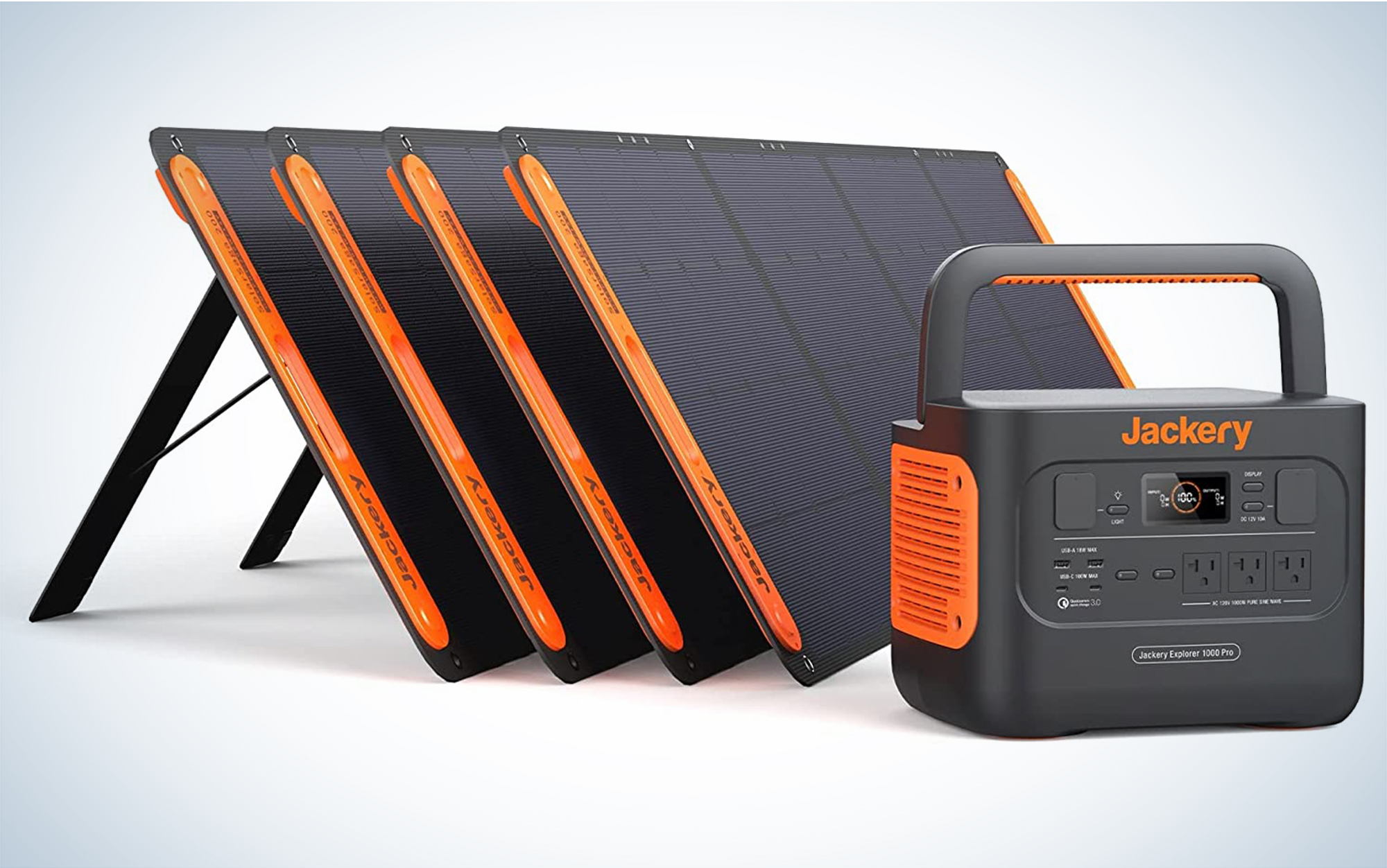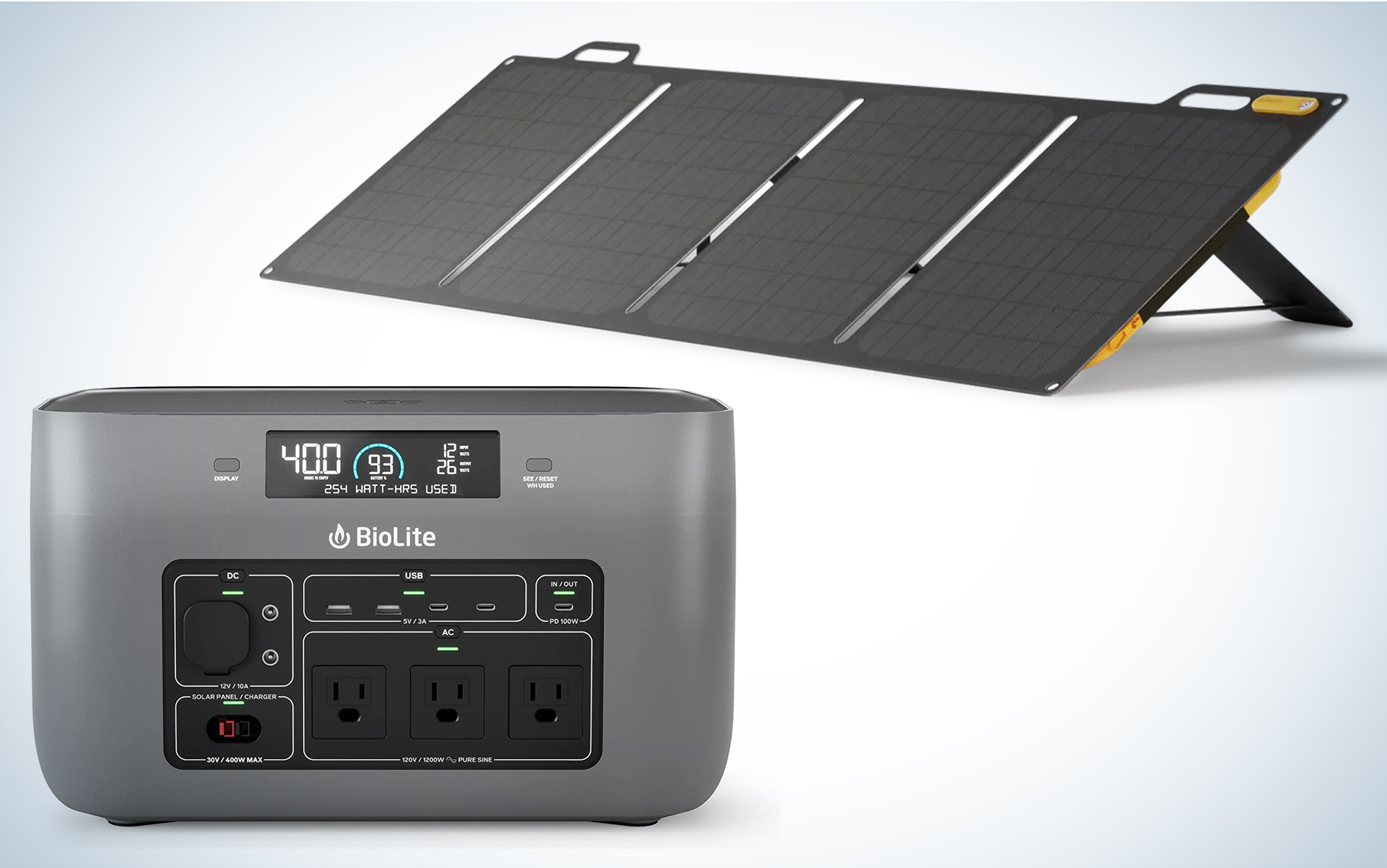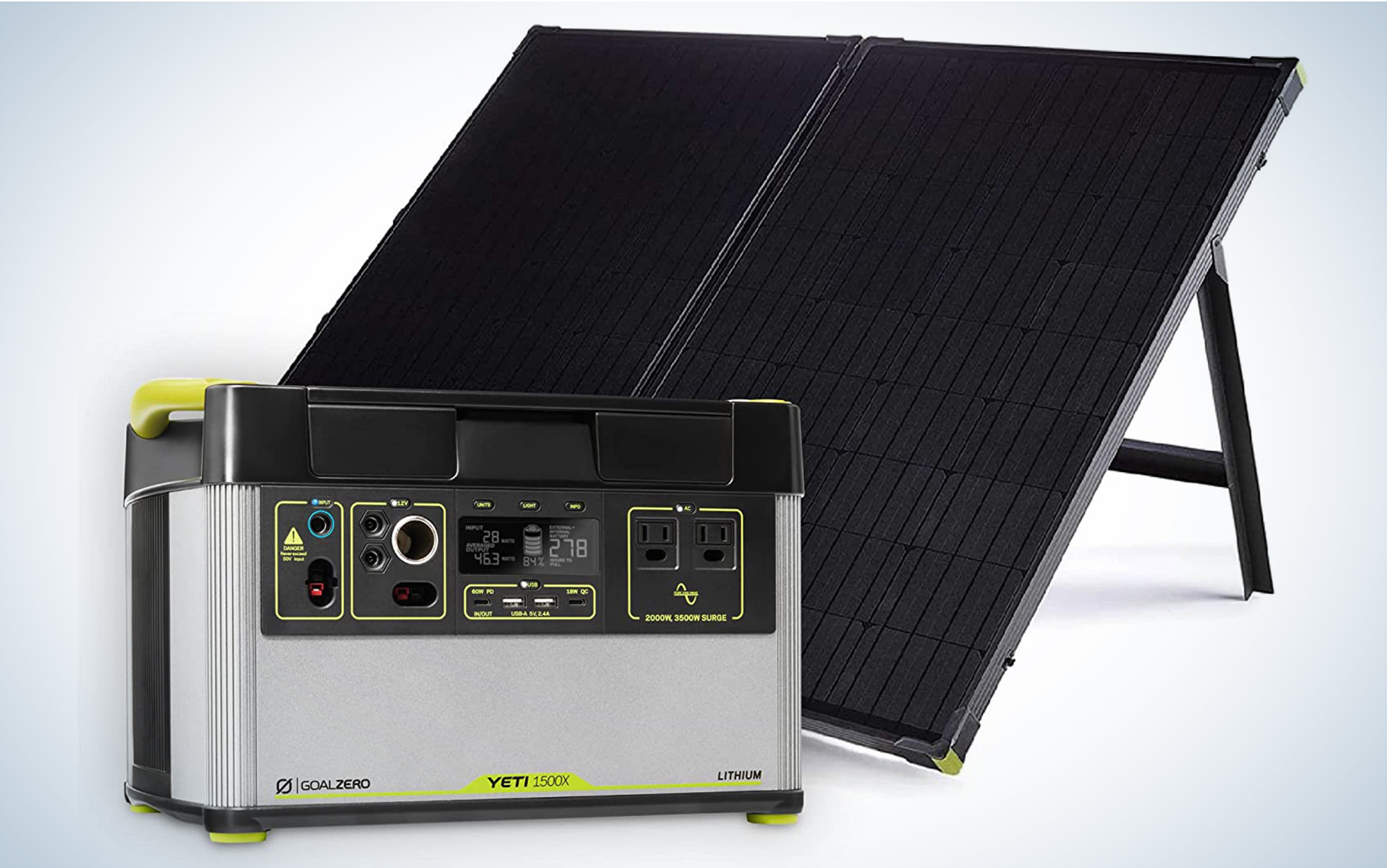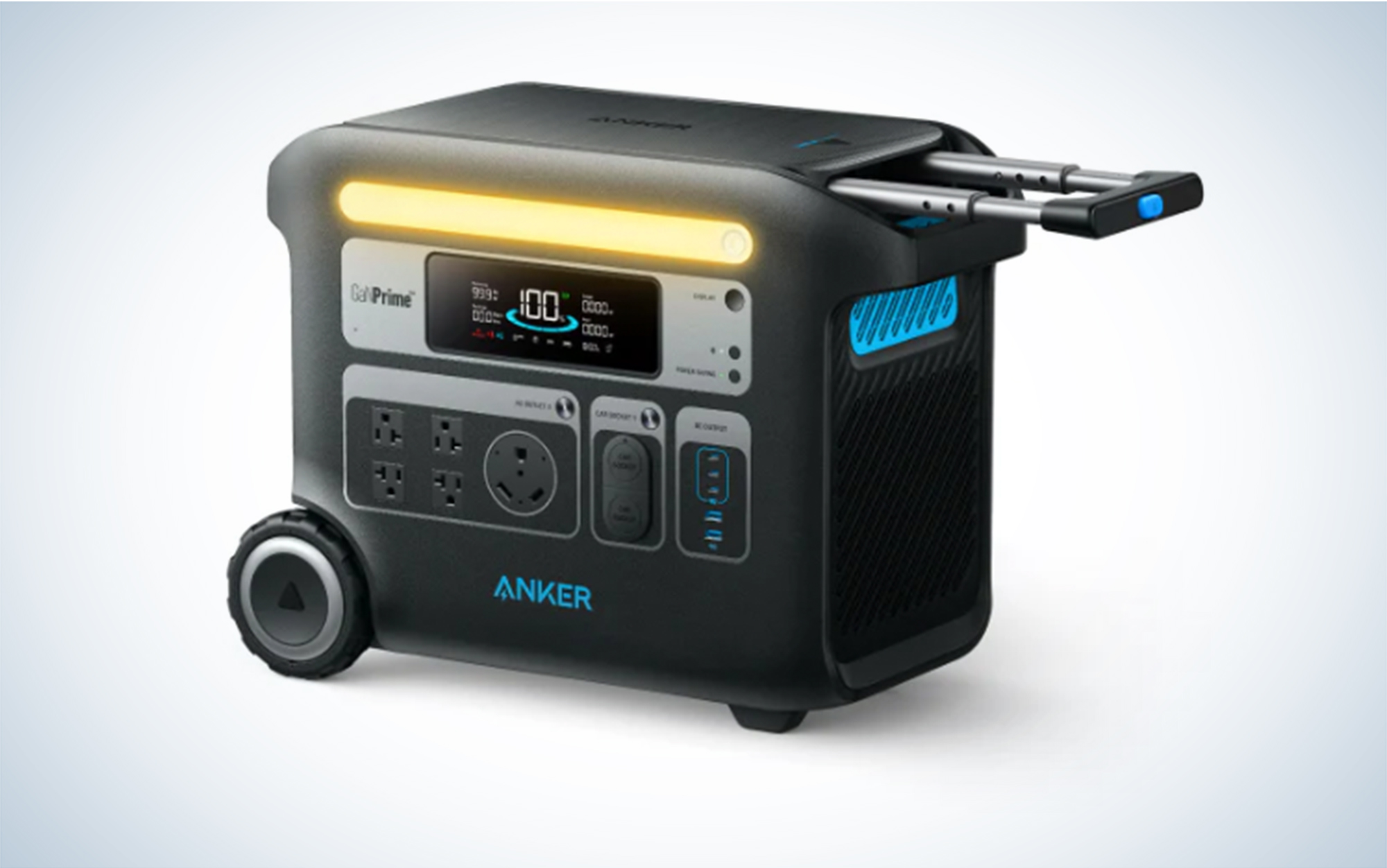We may earn revenue from the products available on this page and participate in affiliate programs. Learn More ›
Updated Feb 6, 2023 5:21 PM
Whether you are outfitting your home in case of an extended power outage or looking for a steady supply of off-grid power for your overlanding setup, it’s never been a better time to purchase a solar generator. But sifting through all the available options on the market—power stations that are lunchbox-sized to luggage-sized, solar panels that can pack in a backpack to multiple eight-foot long panels you chain together—can take a lot of time and effort. To help you choose the best solar generator for your purpose, we tested some of the most powerful models from Anker, Jackery, Goal Zero, and BioLite side by side to see how they stacked up.
How I Tested the Best Solar Generators
There are two components to a solar generator—a solar panel and a power station. To understand the performance of the overall package, I looked at each component and then also assessed how they worked in tandem.
- Solar Panels were tested in tandem (to ensure similar conditions) under clear skies. Testing was conducted in late fall, when the angle of the sun is less ideal than it would be at the peak of summer, affecting the potential of each panel to reach its claimed maximum output. Solar panels were tested using power stations of the same brand, but where possible, I also used different panels with different power stations to see if that affected the results.
- Power stations were evaluated on a number of criteria. After fully charging all the power stations, I left them in a climate-controlled room for three days and then outside for twenty-four hours in near-freezing temperatures—none of the power stations registered any loss of power during this test. Next, I plugged various appliances into all of the power stations to see how they handled the volume: a dehumidifier, a sunlamp, two laptops, one of the best power banks for camping, a pair of headphones, another power station, etc. Using these setups, I ran each power station down to half its estimated output. Finally, I considered how compatible each power station was with other solar panels, as well as additional features, such as Bluetooth-compatible apps, display panels, wireless charging, USB-C input ports, and more.
Solar Panels Tested
I tested six solar panels rated for both 100W and 200W capacity from Goal Zero, Anker, Jackery, and BioLite.
I checked that all the solar panels were pointed in the same direction and at the same angle when testing their measured output against their claimed output.
| Model | Weight | Size (unfolded) | Output Ports | Warranty | Claimed output | Measured output |
| Jackery SolarSaga 200W Solar Panel | 18 lbs | 540 x 2320 x 25 mm | DC | 1.5 years | 200W | 184W |
| Goal Zero Boulder 200W | 42 lbs | 40 x 53.5 x 1.75 inches | High Power Port (HPP) | 2 years | 200W | 145W |
| Anker 531 Solar Panel | 20 lbs | 23.75 x 83.75 x .75 inches | XT-60 | 2 years | 200W | 158W |
| Goal Zero Boulder 100W | 20 lbs | 40 x 26.75 x 1.75 inches | High Power Port (HPP) | 2 years | 100W | 73W |
| Anker 625 Solar Panel | 11 lbs | 57 x 20.75 x 1.75 inches | XT-60 | 2 years | 100W | 94W |
| BioLite Solar Panel 100 | 10 lbs | 20 x 57.5 x 1 inches | High Power Port (HPP) | 1 year | 100W | 52W |
Power Stations Tested
The power stations I tested ranged in size from 1,002Wh to 2,048Wh, and were capable of either 110 volts or 120 volts (the latter is what you’ll need to run most major appliances).
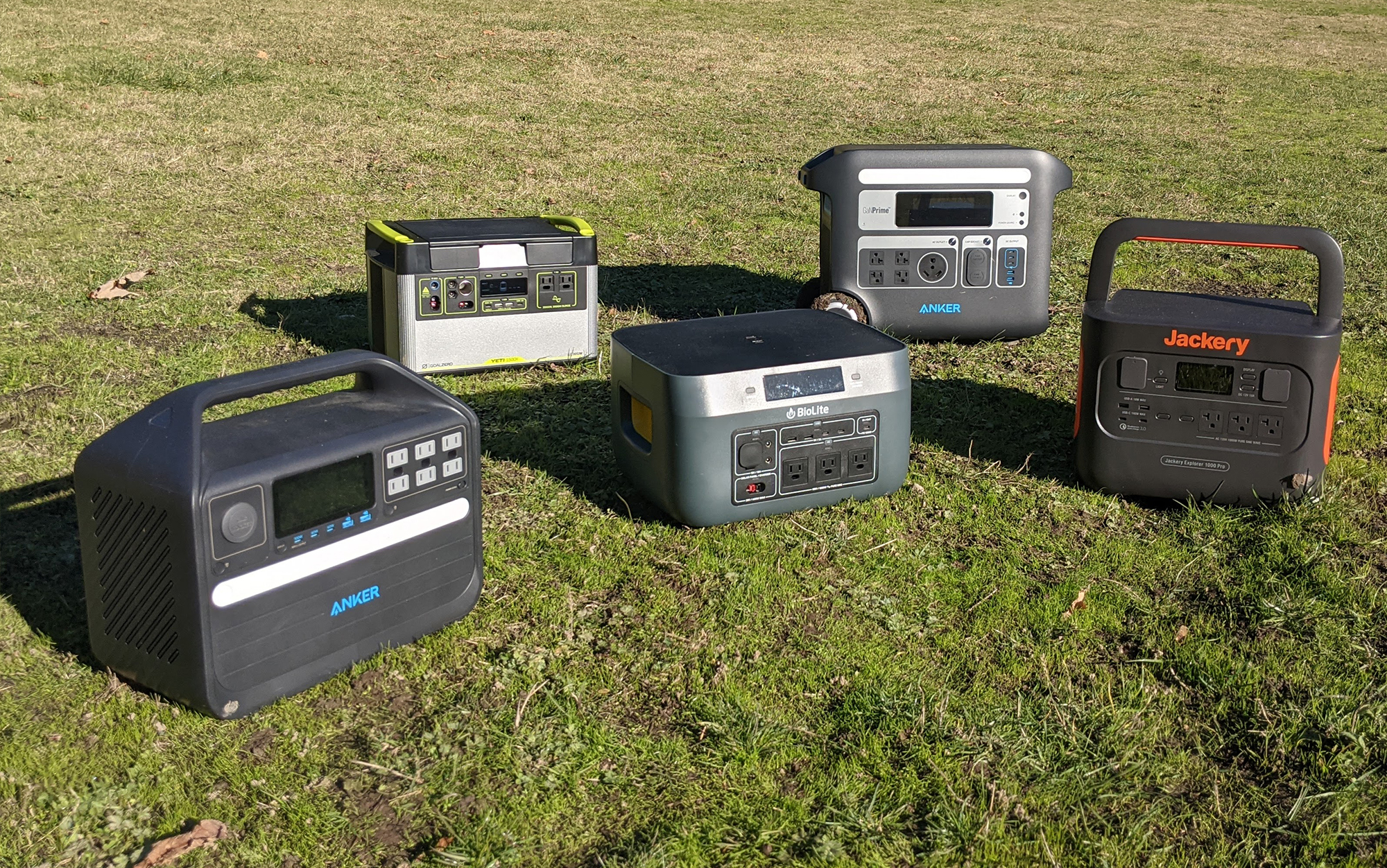
All of the power stations were capable of holding a charge for extended periods of time, losing no power in either the three-day indoors test or the 24-hour outdoors test in subfreezing and near freezing temperatures.
| Model | Weight | Wh | Input ports | Input Max for Solar | Max voltage for the AC outlet | App? | Warranty |
| Goal Zero Yeti 1500X | 45.5 lbs | 1,516 | USB-C, 8mm, high power port (HPP) | 600W | 120V | Yes | 2 years |
| Jackery Explorer 1000 Pro | 25.5 lbs | 1,002 | AC and DC | 800W | 120V | No | 3 years |
| Anker 767 | XX | 2,048 | AC and XT60 | 1000W | 120V | Yes | 5 years |
| Anker 555 | 29.8 lbs | 1,024 | DC and USB-C | 200W | 110V | No | 5 years |
| BioLite BaseCharge 1500 | 26.5 | 1,521 | USB-C, high power port (HPP) | 400W | 110V | No | 2 years |
Key Features
- Power station capacity: 1002 watt hours
- Solar panels: four 200-watt solar panels
- Energy created by one panel in direct sunlight: 184 watts
- Max AC output: 120 volts and 1000 watts
- Also available with a 2000Wh power station
- Also available with two 80-watt panels
Pros
- Powerful solar panel
- Easy to use
Cons
- Smaller power station than other models I tested
Along with the BioLite BaseCharge 1500 and Anker 555, the Jackery Explorer 1000 Pro had one of the more streamlined user interfaces. There are separate buttons to activate the USB outlets, AC outlets, and DC outlet, along with a button to turn on the power station’s light (in case you want to light up your camp or home) and one to turn on the display. The display here gives you the bare minimum of information—watts in, watts out, percent of the battery remaining, and the time to charge or deplete the battery based on the current conditions.
The Explorer 1000 Pro has a max output of 1000W (peaking at 2000W), which is enough juice to power many modern refrigerators. But given that its battery life is only 1002Wh, it can only supply that power for about a day (assuming it’s not charging anything else) unless it’s also being supplied with fresh juice from a solar panel setup at the same time. For some, this won’t be an issue, as they’ll simply be using the battery to channel power to their other devices during the day while it’s charging, and then using the battery at night to power more low-key items like the best camping fans or maybe one high-energy device like a portable fridge.
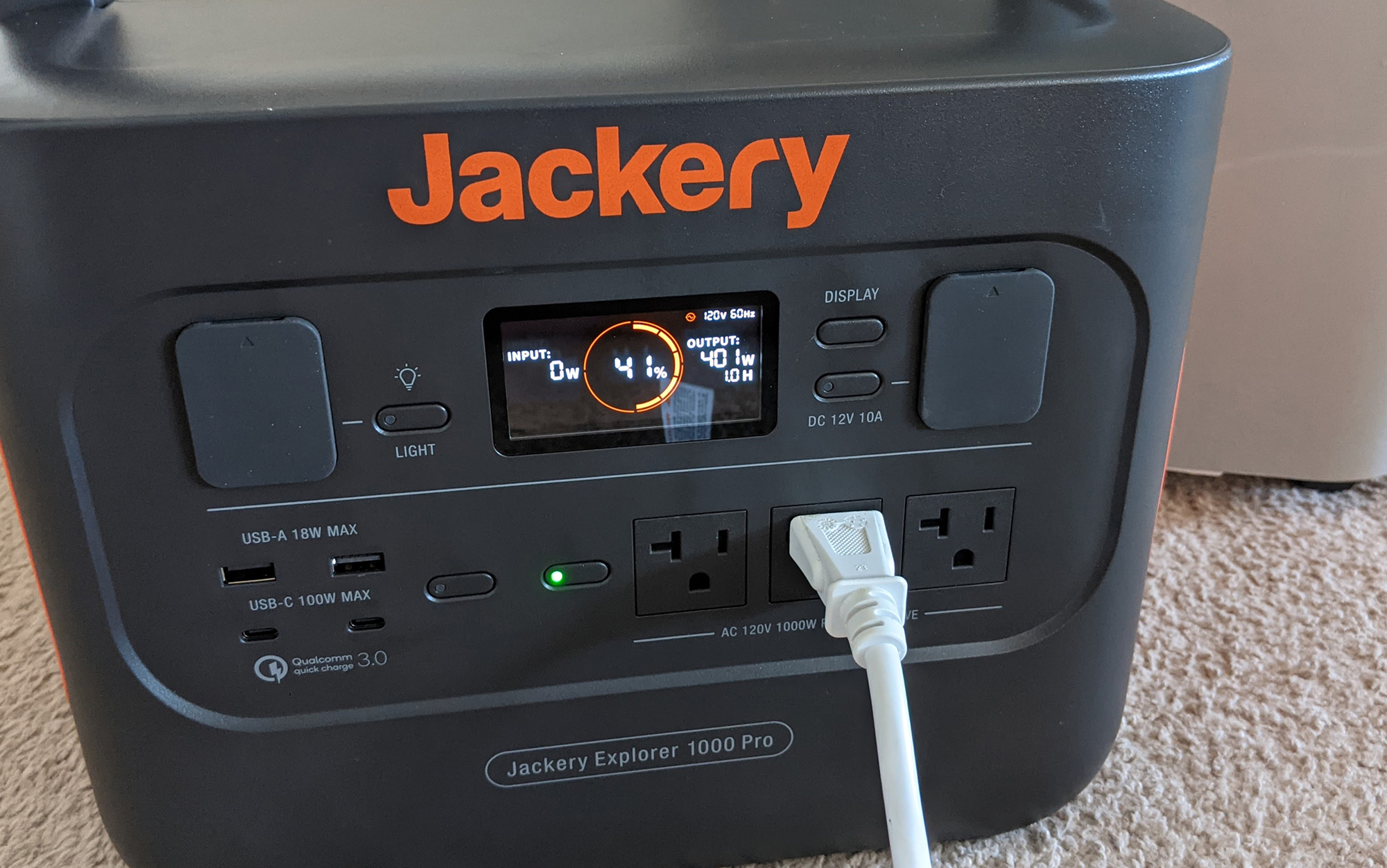
At over 25 pounds, the Jackery Explorer 1000 Pro, is one of the more transportable units I looked at, but it’s still not something that you’d want to lug more than a hundred feet or so at a time.
The Solar Panel
I originally tested the SolarSaga 200W solar panel as a full setup, with four panels plugged into a single power station. This test showed the full power of the array, which registered 650W of power generation on a sunny (albeit hazy) day. I retested a single panel in tandem with the rest of the units in this review more recently, and under completely clear skies, the panel was even more impressive: It registered 184W of energy coming from a single panel. If you don’t have much time to recharge your power station from the sun, then the full setup with all four panels is a no-brainer.
It is, though, a little complicated. Each panel comes with a carrying case and a cable that connects back to the two DC ports on the Explorer 1000 Pro. If you see a math problem here, that’s correct: You’ll also need two of the Jackery Solar Panel Connectors, which, strangely, are not included in the purchase price. Two of these can be used to double the number of panels you can connect to the Explorer 1000 Pro.

Setting up and taking down this many panels takes some time, but I was impressed by how easy and intuitive it was. That’s because Jackery streamlined the number of ports on each unit, making it that much clearer what cable connects to what unit in what port.
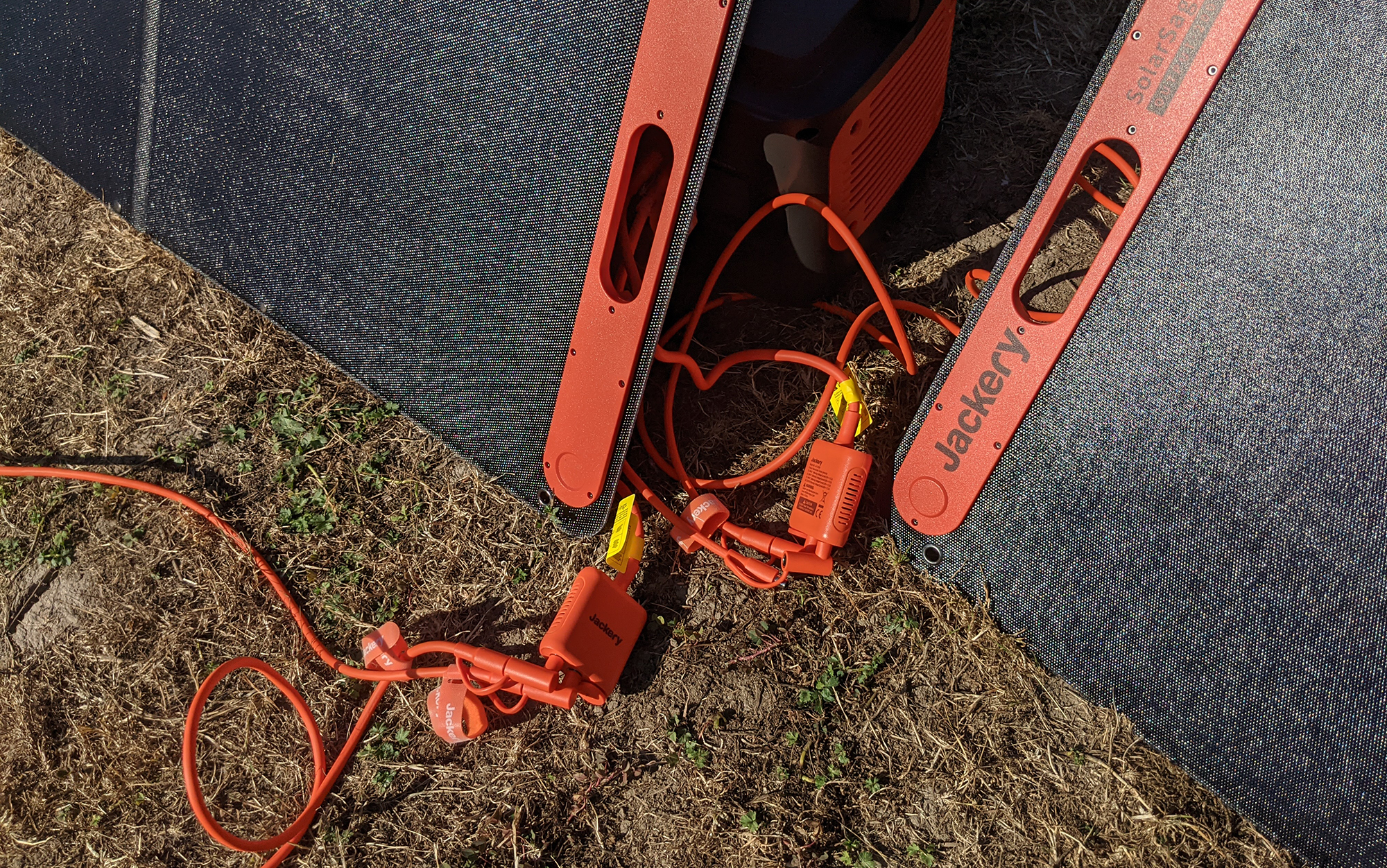
While there might at first glance appear to be a disconnect between the charging time capabilities of this setup and its battery life, it’s worth keeping in mind that conditions are not always optimal. One of the things that impressed me most about these units is the panel’s ability to generate electricity in lowlight conditions. Even in complete shade—dusk fast approaching—a single SolarSaga was generating a 6W input.
Key Features
- Power Station Capacity: 1024 watt hours
- Solar Panels: two 100-watt solar panels
- Energy Created By One Panel In Direct Sunlight: 94 watts
- Max AC output: 110 volts and 1000 watts
- Also available with a 1229Wh power station and three 100W solar panels
Pros
- Highest performing solar panel in my test
- Plenty of AC outlets for the whole family
Cons
- Max power station output is 110V
- XT60 port on the solar panel needs an adapter to be compatible with the power station
If your family has a bevy of devices that seemingly all need to be plugged in simultaneously, you are in luck with the Anker 555 PowerHouse. It was the only unit in my test that boasted six AC outlets, as well as three USB-C outlets and two USB-A outlets. There were so many outlets that it was actually hard to find enough things to plug into it in my home—I ended up with an air purifier, sun lamp, two fans, a laptop, and a battery pack plugged in. The 555 PowerHouse had no problem with this—it barely used a third of its total output power. If your family has a bunch of devices that simply must be charged at all times, then this is a great option.

Note that this would not be the best choice for someone looking for backup power for their refrigerator, as its 1,024 watt hour capacity was on the smaller side in my test and only has up to 110-volt output.

Something else I liked about this unit was the utility—and comparative simplicity—of its charging abilities. It has one DC input port in the back and a USB-C 100W port that plays double duty with input and output. As someone who struggles to keep track of the sheer number and variety of cords that are always floating around, I appreciated the ability to recharge this unit without tracking down the original cord.
The Solar Panel
The Anker 625 was easily the best of the 100W panels I tested—it was one of the best solar panels for camping I tested back in the spring, and it’s still one of my favorite pieces of gear. It even beat out the 200W Jackery SolarSaga if you consider that this panel generated 94 percent of its claimed output, while the Jackery only managed 92 percent. Part of this is the inclusion of a sundial in the top center of the panel, which helped me align the panel correctly during setup. This sundial is such a useful feature, that after I had correctly aligned the Anker 625, I went back and adjusted all the other panels to match it—an instant uptick in power was measured. Two of these panels is a great choice for recharging a power station the size of the 555 PowerHouse.

I’ve been testing this panel for a while—unlike some of the others in this test—and in that time I’ve noticed that it’s picked up a bit of scuffing along the edges of the fabric backing. While not ideal, this has not impacted the functionality of the unit in the slightest.
Key Features
- Power station Capacity: 1521 watt hours
- Solar Panels: one 100-watt solar panel
- Energy Created By One Panel In Direct Sunlight: 52 watts
- Max AC output: 110 volts and 1200 watts
- Also available with a 622Wh power station
Pros
- Lightest unit I tested
- Power station is easy to use
- Power station is compatible with the Goal Zero Boulder 200 (up to two)
Cons
- No bundle option available
- Solar panel was the weakest in my test
Like the Jackery Explorer 1000 Pro and the Anker 555 PowerHouse, the BioLite BaseCharge 1500 has a sleek and streamlined user interface that is easy to read and understand. The display panel shows the percentage of your battery left, the estimated number of hours it will take to either run through or finish charging the battery, the watts coming into your unit, and the watts going out. It also shows you the number of watt-hours the unit has used in total—watching that number was a bit like watching the odometer tick up on your car. Not super useful daily, but a nice thing to know in the aggregate. There are separate buttons to turn on the ports for USB, DC, and AC power, as well as a button to turn on the display. (A second button allows you to reset the display of how many watts you’ve used, useful if you are interested in getting an accurate read on your total power needs).

There were three details that made the BioLite BaseCharge 1500 stand out next to the competition:
- A wireless charging option on top of the unit. (Unfortunately, I was not able to test this as I do not have a device with this capability.)
- The choice to put the input port on the front of the unit, as opposed to the back. During testing, I found that this configuration was easier when plugging in solar panels.
- This power station is surprisingly lightweight, especially compared to the Yeti 1500X, which has a comparable watt-hour capacity. If you plan to move your power station from room to room, this is a no-brainer.
During testing, the BioLite BaseCharge 1500 was one of the few power stations where the “hours to empty” estimate kept jumping around. It probably accurately reflected the change in power needs of the bigger devices, but was confusing to look at and made the time estimates less useful than they would have otherwise been. (The percentage estimate of the amount of battery life remaining, however, stayed fairly consistent.)
The Solar Panel
While the BaseCharge 1500 ended up being one of my favorite power stations, the BioLite Solar Panel 100 was my least favorite solar panel. First off, two kickstands simply don’t provide enough support for the panels. This is partly because two just isn’t enough, but also because one of the kickstands is situated closer to the middle of the unit, rather than both being on the outer edges. I was able to use the BaseCharge 1500 to help prop it up a bit, but it wasn’t an ideal solution.
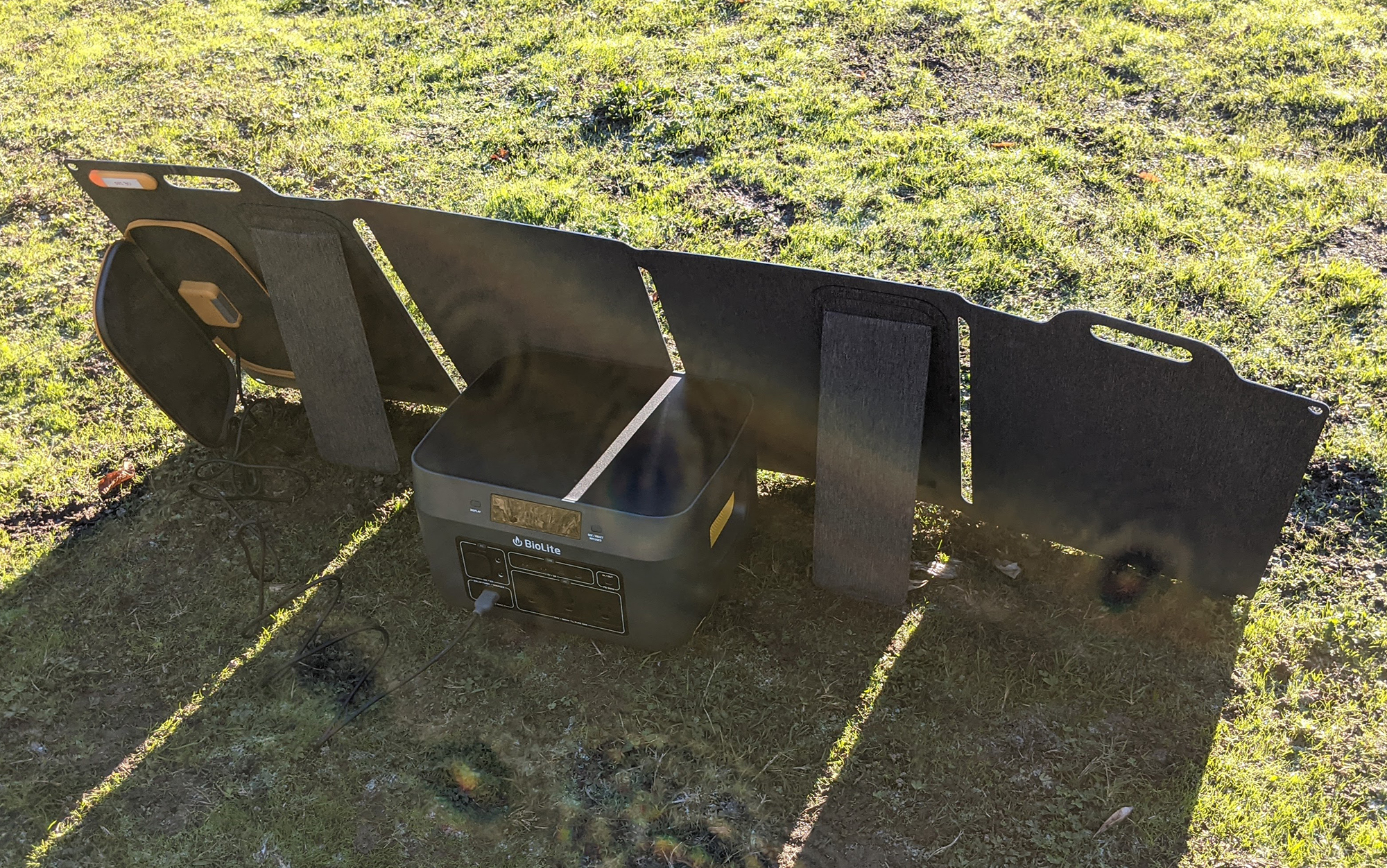
One thing that I did like about this unit is that, like the Anker 625, it incorporated a sundial, which helped me to situate the panel at the right angle to maximize the energy output.

However, even with that advantage, this was by far the weakest panel in my test, only generating about half of its claimed output even on a clear day with sunny skies. If you choose to go with a BaseCharge 1500, it’s worth considering pairing it with a Goal Zero Boulder 200W, a pairing that proved successful during testing.
Key Features
- power station capacity: 1516 watt hours
- Solar panels: one 100-watt solar panel
- Energy created by one panel in direct sunlight: 73 watts
- Max AC output: 120 volts and 2000 watts
- Solar panels also available at 200-watt and 300-watt capacity
- power station s available in sizes ranging from 187 watt hours to 6071 watt hours
Pros
- Possible to monitor the power station from another room using the app
- The larger power station s could power major appliances for days without recharging
Cons
- Heavy
- Less intuitive than other power station s I looked at
- Difficult to recharge if you lose the original cables
The Yeti 1500X was one of the most complicated user interfaces to navigate, and included several details that I have mixed feelings about. The most glaring one is that when the unit is plugged into a power source, a light blinks blue continuously until it is charged, when it switches to solid blue—if you are in the same space as this unit when it is charging, this is very distracting. Next is the three buttons above the display—which read “unit,” “light,” and “info.” Unit is fairly straightforward—it toggles the input and output measurements between volts, amperes, watts, etc. This is pretty handy if you’re curious about how much power a given device is chewing through. Next is light—on other power stations, this button turns on an actual light, which is useful if you’re trying to see what you’re doing in the evening hours. The Goal Zero, however, does not have a built-in light; what this button turns on and off is the display screen showing the power supply. The info button only seemed to turn on the display (not off)—it was unclear what other use this was meant to have.

Interestingly, despite having one of the most powerful AC ports in my test, there was only space for two plug-ins. Most of the time, I suspect this will be plenty for people (and it does help to cut down on the unnecessary juice being lost out of these ports), but others might find themselves digging out a powerstrip to make up for the lack fo ports.
One of the more unusual features of the Yeti 1500X is a top lid, which has storage for charging cables, or anything else you want to throw in there. Underneath, it also has detailed descriptions of all of the power limitations of the various ports, plus evergreen reminders about not letting your power station get wet—all in semi-legible font. Surprisingly that can’t be said for any of the power stations in my test (including the Anker 767, which despite having the largest surface area strangely didn’t include this information at all). There is also a second 8mm port under the lid as well as a 12V HPP output port.

The amount of power it was being charged with supplying—1385 watts through a single AC port (I had plugged it back into the Anker 767 unit) was higher than anything else I tested, due to this being the only combination where that was available—the maximum input capability of the Yeti 1500X is 150V from AC power). The icon showing how much power was remaining did, however, stay consistent.
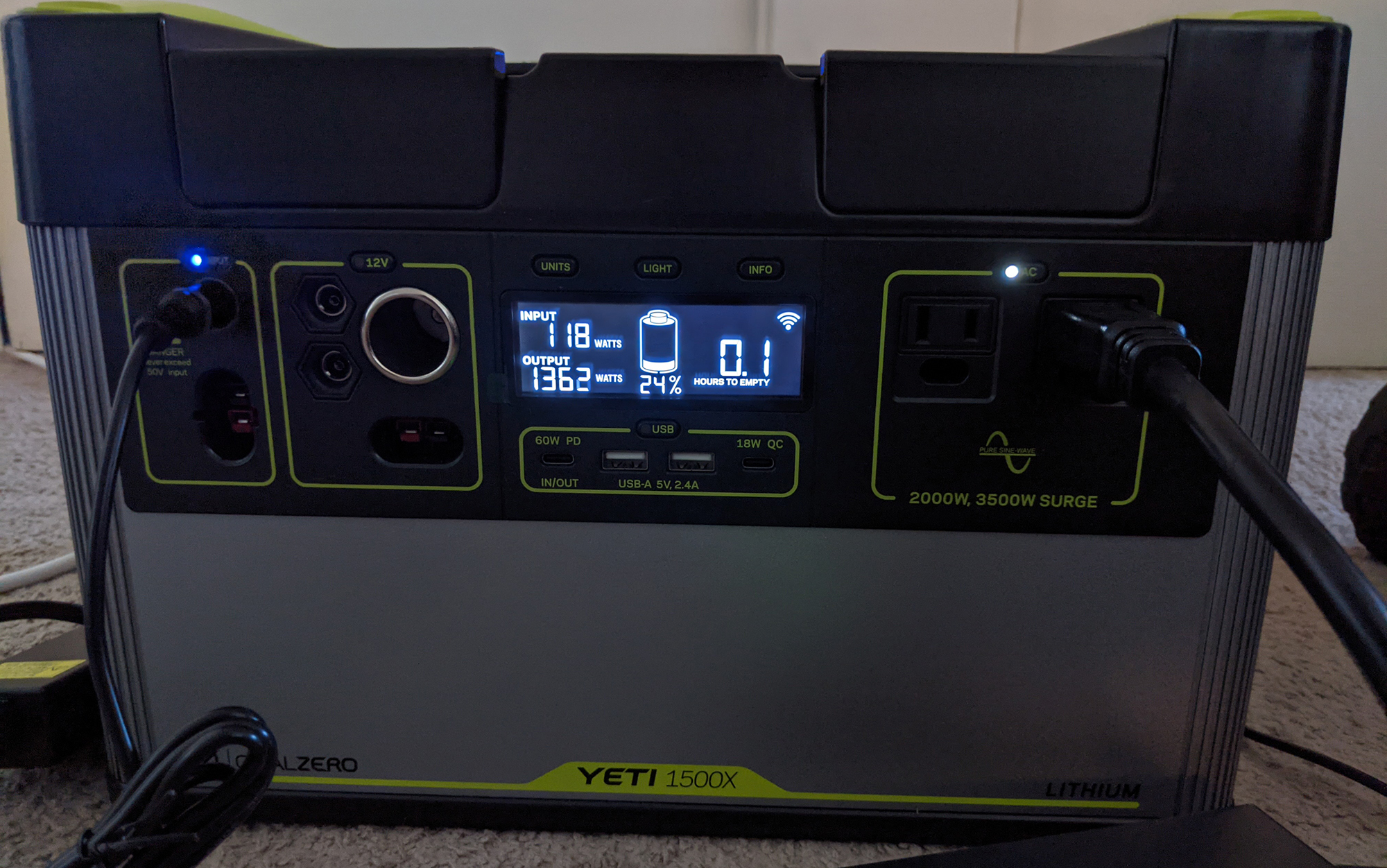
Like the Anker 767, the Yeti 1500X has an app that you can use to monitor the battery’s power usage. This app was not as intuitive to use as the Anker 767’s, requiring several more steps to get to the point where I could monitor the battery usage (it also asked me to upgrade its firmware seemingly every other time I opened it). However, once you have the whole thing set up, it provides just as much information and control as the Anker 767 app.
The Solar Panel
I tested both the Boulder 100W and the Boulder 200W from Goal Zero. These are basically the same panels (although with different ports (HPP versus DC), affecting what other power stations you might be able to pair them with), just at a different size, so whether you choose one over the other will depend on your energy needs, and your personal strength.
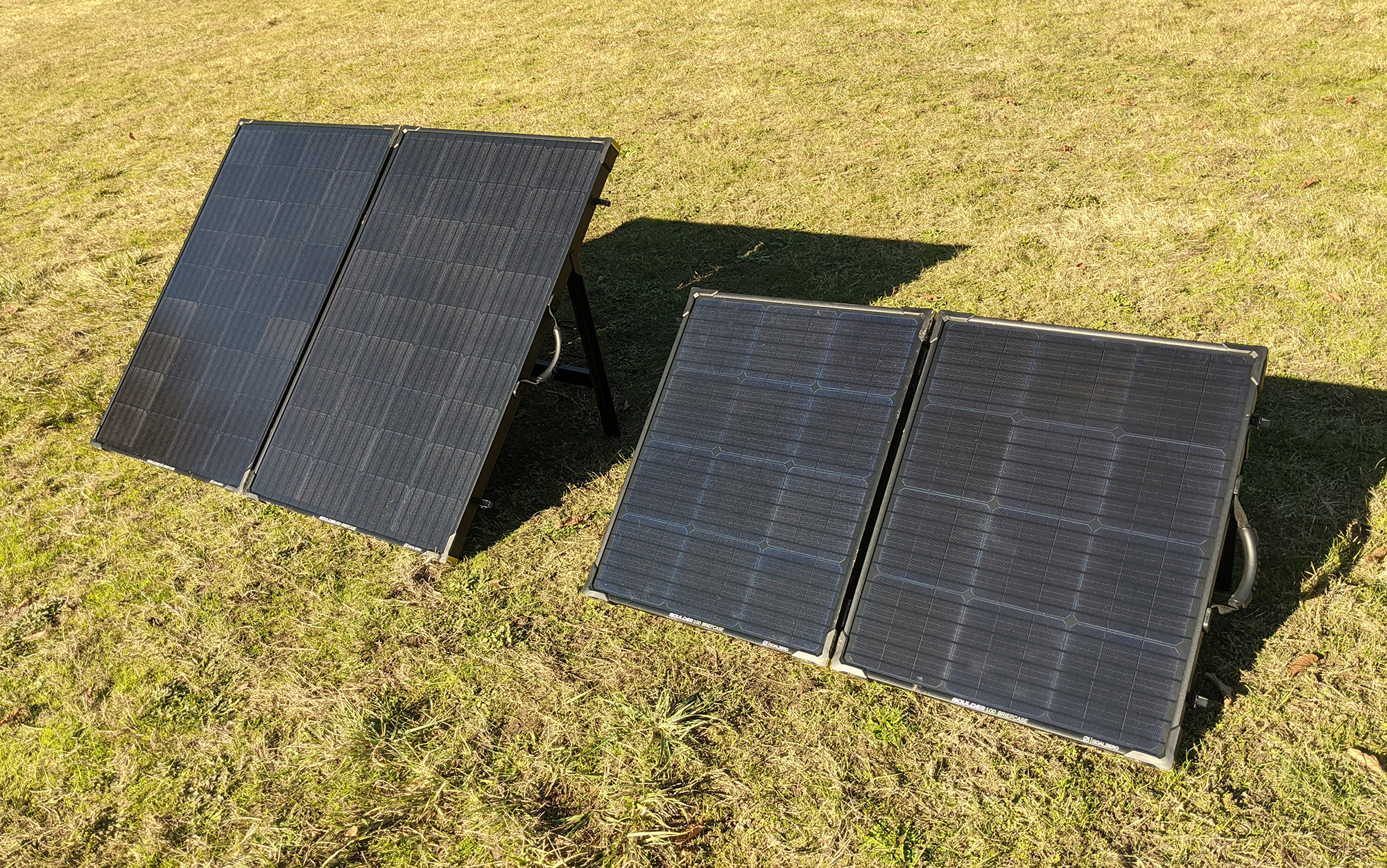
These panels are significantly bulkier and more cumbersome than anything else I tested. While the likes of Jackery’s SolarSaga series and the Anker solar panels are a bit like someone took a backpacking solar panel and just blew it up to 20x the size. The Boulder series from Goal Zero looks like a solar panel off your house that’s shrunken down to something you could throw into the back of your car.
Both the 100W and the 200W solar panels come with carrying cases, which due to the placement of the zippers are kind of a nuisance to use. But use them you should because the way these panels fold up leaves the solar cells on the outside of the package, rather than on the inside (like the rest of the solar panels in my test). While the 100W panel was heavy, but otherwise easy enough to move thanks to the inclusion of a comfortable handle on the long side of the folded-up panels, the 200W had a tendency to drag across the ground (at least this was my experience, as a 5 foot 5 inch individual), forcing me to lean to one side as I walked. Did I mention that these panels were heavy? At 42 pounds, the Boulder 200W is extremely heavy.
While the Boulder solar panels were reasonably easy to set up, the way the legs are designed give you fewer options for maximizing the angle of the sun in the winter months, when it’s lower to the horizon. This showed during testing, when the panels only pulled in 73W for the 100W panel, and 143W for the 200W panel.
Key Features
- power station capacity: 2048 watt hours
- Solar panels: two 200-watt solar panels
- Energy created by one panel in direct sunlight: 158 watts
- Max AC output: 120 volts and 2400 watts
Pros
- RV plug
- Fully featured app
- Second most powerful solar panel I tested
Cons
- The Anker 767 power station is quite heavy
- The solar panel lacks a sundial
Product Description
The Power Station
During testing, this unit was more than capable of taking on every device I could throw at it without blinking. If you’re looking for a unit to power your phone during a power outage, this is definitely overkill. The AC outlets alone are capable of managing 2400 watts—your average fridge is only using 250W or so at a time, so this is really more than enough for most purposes.
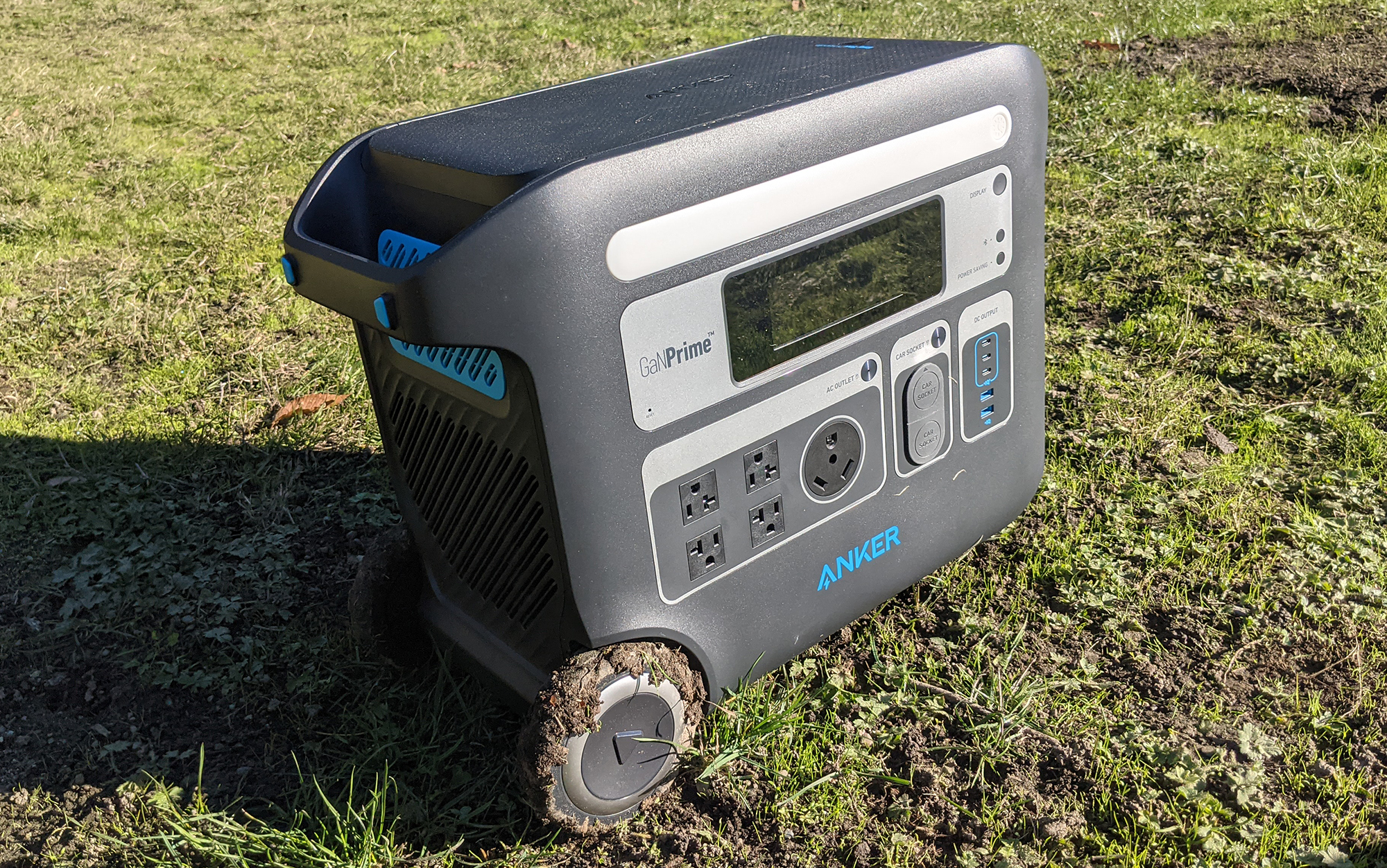
In fact, it has so much power that I didn’t come anywhere near maxing it out during testing. (Strangely, this unit only has three AC outlets compared to the six on the Anker 555 unit, which has half the capacity.) So no surprise here that it was also the only unit in my test that had a plug for an RV; fitting, since the total capacity of the Anker 767 is about equal to a day’s worth of power usage by an RV.
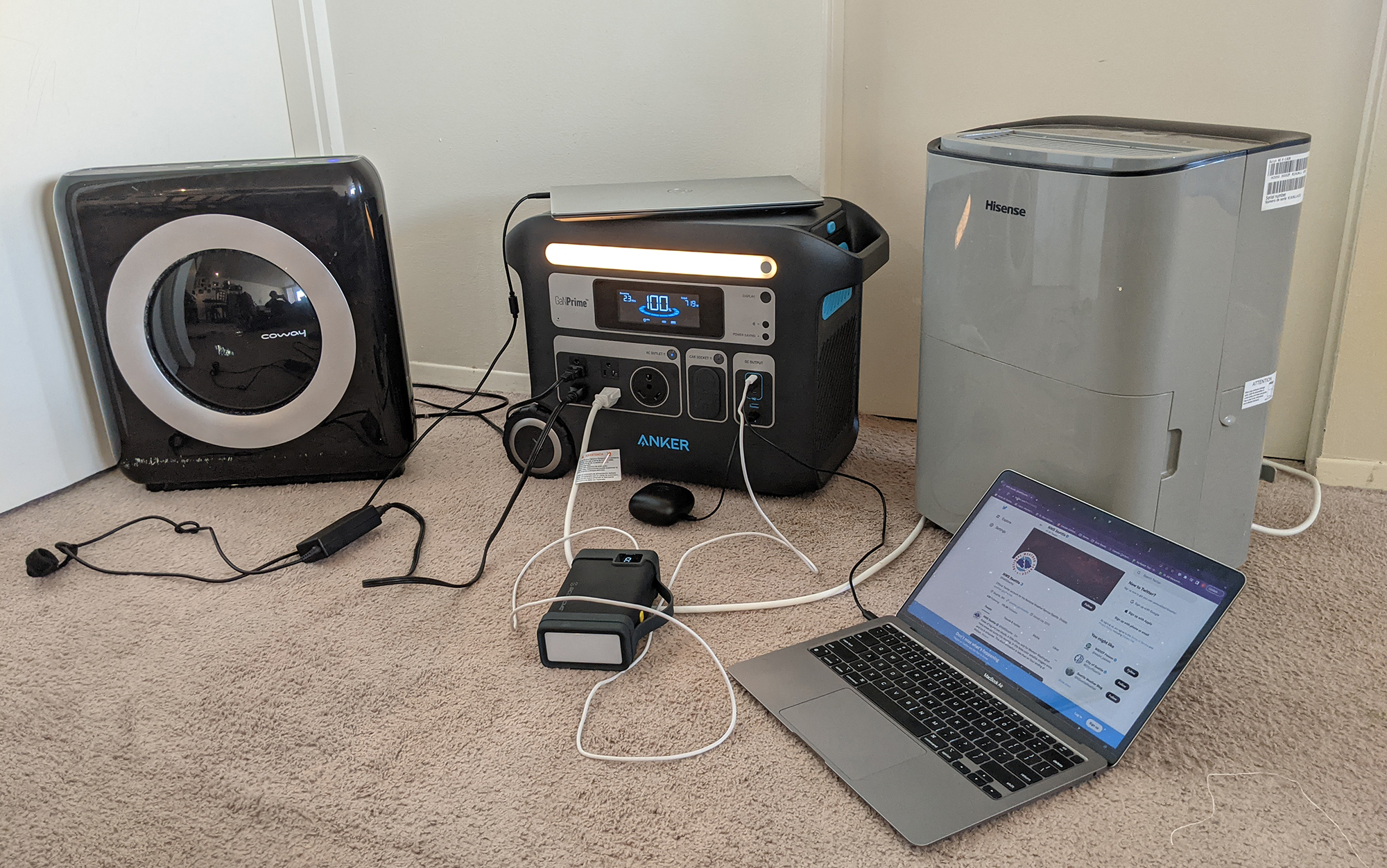
My favorite detail about this power station was the app. While testing the best solar generators, I went outside pretty often to check if everything was working properly. That gets pretty annoying after a while. But with the Anker 767, I could just open the app up and check to see how much power was being generated (or not). In addition to showing me the current power capacity of the unit, it also gives you the ability to turn off and on the AC, USB, and DC ports, as well as turn on the light on the side. It also shows you the internal temperature of the unit. Pretty handy!
The Solar Panel
The Anker 531 Solar Panel was the simplest to use of the larger solar panels I looked at. I liked that it didn’t have a separate carrying case to mess with, and a simple carabiner and mesh bag combo did the trick to stash the relevant cable and ensure it didn’t become separated from the larger unit. Like all of these kickstand solar panel setups, it was a little cumbersome to use, but extra reinforcement on the three kickstand legs were useful to an extent when adjusting the panel to a lower angle.

While this solar panel isn’t quite as powerful as the Jackery SolarSaga 200W, it easily produced over 75 percent of its 200W capability—and the Anker 767 can support up to five of these chained together. Strangely, this panel did not have the same sundial component that the 100W Anker 625 did. However, after I set up the Anker 625 panel, I adjusted the Anker 531 panel to match its angle and immediately saw a 23W difference in the power input. Hopefully, Anker will simply add this accessory onto the 531 model in the future, but in the meantime, you can purchase a clip-on sundial separately.
Read our full review of the Anker Solar Generator 767 for more information.
How to Choose the Best Solar Generator for You
Your Budget
Solar generators can be a pricey investment. Before you start looking at the various power stations and solar panels and package deals available, it’s important to know how much you are willing to spend. Underspending on a power station can result in inadequate power needs in the case of a power outage or while adventuring off grid.
Your Power Needs
This is the big one. For the power station, there are two main numbers you’ll want to focus on: voltage and watt hours. First figure out what the most power-hungry appliance you’ll be powering is (likely a refrigerator) and check its voltage requirements. Then look for power stations that can meet those voltage requirements (typically out of the AC outlets). Next consider how many watt hours of power you’ll want. Estimating this is as much art as science, given that the power needs of larger appliances vary considerably—during testing I saw the AC output regularly jump between 250 watts to over 1,000 watts. It’s also tough to know exactly how much you’ll be using each appliance in a power outage event—will you need to power a space heater during winter, or an air conditioner in the summer months? A good rule of thumb is that if you are only looking for a solar generator to keep your laptops and phones charged, a 1,000Wh solar generator will give you more than enough juice. If you’re looking to power a full-size refrigerator, then you should buy the largest unit you can comfortably afford. If you are looking to power your entire home via a solar generator, then it’s worth spending the time to calculate your full array of power needs to figure out what you’ll need to make that happen.
Solar panels are a bit simpler. The first step is to figure out how many hours a day you want to spend charging your power station. If you’re overlanding in the desert, you might be willing to spend all day with your power station plugged into its corresponding solar panel; as such, you can get by with lower wattage output. On the other hand, if you expect to be recharging your power station for brief periods of time, perhaps during a wintertime power outage, you’ll want the highest output panel you can get, or even an array of panels, so that you can recharge your power station as fast as possible. Keep in mind that a solar panel’s output will be affected by both the season and the weather, and plan accordingly.
Portability
Power stations are often heavy, and solar panels can be unwieldy. Purchasing a larger unit than is necessary for your needs can reduce the utility of your overall setup—after all, if you hesitate to pull out your solar generator because of what a pain it is to set up, then it’s not doing you much good after all.
FAQs
Q: Are solar-powered generators worth the money?
Solar-powered generators are expensive, especially if you are looking to power high-energy appliances, but for many people the peace of mind they bring makes them more than worth the money. Also, compared to gas-powered generators, solar-powered generators are quieter, lighter, and are free to recharge (no fuel costs), and so for many people are less expensive over the long run. The key is making sure you select a unit that can hold and generate enough power to run whatever you plan to plug in for an extended amount of time.
Q: How do I choose a portable solar generator?
While estimating your energy needs during a surprise blackout can be tough, if you are shopping for a solar generator for a car camping, RV, or overlanding setup, then you’ll be able to hone in more closely on your exact requirements. That’s because the manufacturers for these products assume that most individuals will be using them off the grid, and can provide reasonable estimates of how much juice you’ll need to power them for a set amount of time.
Q: Can a solar generator run a refrigerator?
Yes, some solar generators can run refrigerators. There are two numbers that you need to line up when choosing the right solar generator for your needs: volts and watt hours. First, look to see what the voltage requirements are of your refrigerator—you can typically find this on a sticker on the inside of your fridge.
Q: Can a solar generator run an air conditioner?
Yes, a solar generator paired with a power station can run an air conditioner. One thing you have to keep in mind is that the air conditioner’s power needs must match the power output of your power station.
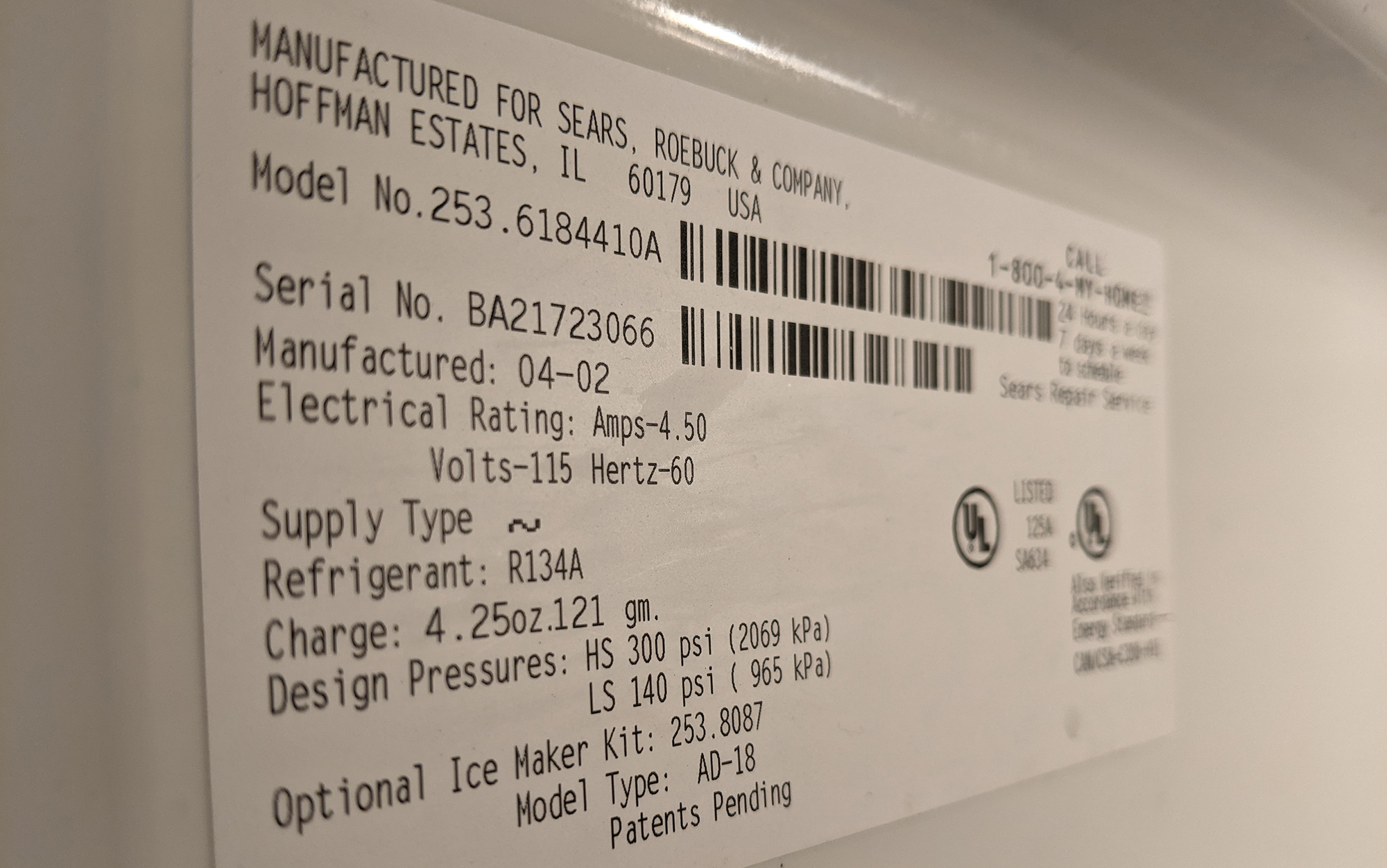
Then choose a power station that can meet the voltage needs of your refrigerator. The watt hours (Wh) essentially represent the size of the battery in your power station —the larger the battery, the longer it will power your fridge for, and the more it will cost. Typically, a 2,000Wh power station has enough juice to run your fridge for a day, but that depends on the power needs of your refrigerator, including the ambient air temperature and any add-ons running in the background. If you expect to have a solar generator powering a refrigerator for an extended period of time, choose larger, more powerful solar panels to pair with it, so that your refrigerator spends less time unplugged while the power station is recharging.
Final Thoughts on the Best Solar Generators
After testing the best solar generators over several months—both individually and in tandem—it’s clear that the Jackery Solar Generator 1000 Pro (or 2000 Pro, depending on your power station needs) is one of the best setups available. While the Jackery combo can often be on sale, if you’re looking to spend less money overall, the Anker 555 Solar Generator Pro is a great option for families looking to make sure everyone’s devices are powered for the long haul. If you have a strong idea of exactly what your energy needs are, check out the sheer number of options offered by Goal Zero—panels that vary from 100W to 300W and power stations that go up to 6,000Wh. Individuals and families on the go will appreciate the portability of the BioLite duo, while RVs and overlanders will benefit from the juice and powerful panels of the Anker 767 power station and 531 Solar Panel.

